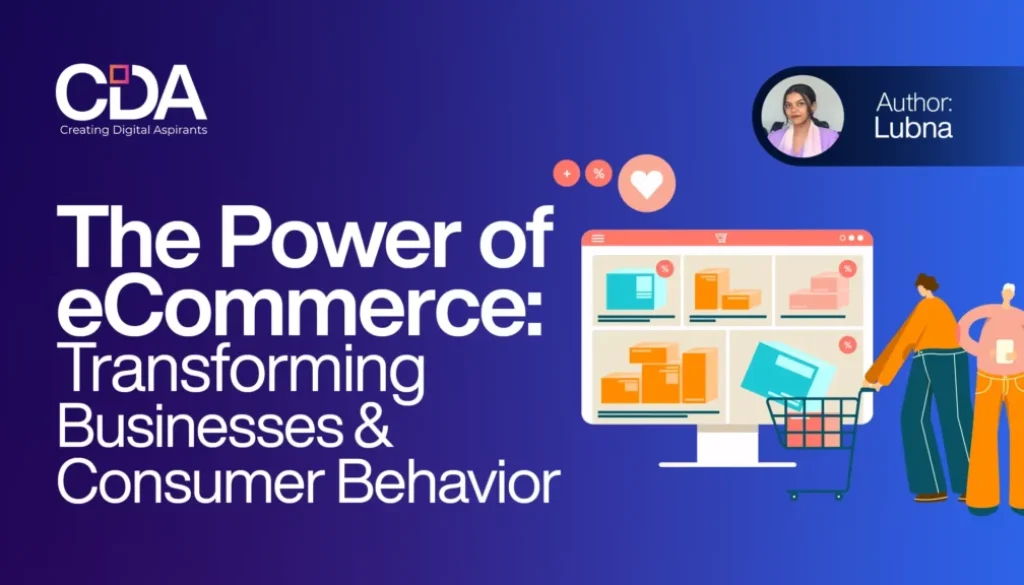The Power of eCommerce: Transforming Businesses and Consumer Behavior
In the digital age, eCommerce has emerged as a cornerstone of the global economy, transforming how businesses operate and consumers shop. From its early days of basic online transactions to the sophisticated platforms we see today, eCommerce has continuously evolved, offering endless opportunities for businesses of all sizes to reach global markets and for consumers to enjoy unparalleled convenience. In this blog, we’ll explore the key aspects of eCommerce, its impact on businesses and consumers, and the trends shaping its future.
eCommerce, short for electronic commerce, refers to the buying and selling goods or services over the Internet. It encompasses a wide range of business models, including B2B (business-to-business), B2C (business-to-consumer), C2C (consumer-to-consumer), and C2B (consumer-to-business). The essence of eCommerce lies in its ability to break down geographical barriers, enabling businesses to reach customers worldwide and offering consumers access to a broader selection of products and services.
The journey of eCommerce began in the 1990s with the advent of the internet. Early pioneers like Amazon and eBay set the stage for a multi-trillion-dollar industry. Over the years, eCommerce platforms have evolved from simple online storefronts to complex ecosystems that integrate various technologies such as mobile apps, AI-driven personalization, and seamless payment systems. Today, eCommerce is not just about online shopping; it’s a holistic experience that encompasses product discovery, customer engagement, and post-purchase support.
Table of Contents

Impact on Businesses
For businesses, eCommerce offers a wealth of opportunities. It allows companies to operate 24/7, reach a global audience, and reduce operational costs. With eCommerce, businesses can collect and analyze customer data to gain insights into consumer behavior, preferences, and trends. This data-driven approach enables companies to tailor their offerings, improve customer experiences, and ultimately drive sales. Moreover, eCommerce has leveled the playing field for small and medium-sized enterprises (SMEs). With the right strategy, even a small business can compete with industry giants by leveraging digital marketing, social media, and e-commerce platforms to build a strong online presence.
Impact on Consumers
For consumers, eCommerce has revolutionized the shopping experience. Convenience is perhaps the most significant advantage—shoppers can browse, compare, and purchase products from the comfort of their homes, at any time. Additionally, eCommerce provides access to a vast array of products that may not be available locally, often at competitive prices.
The rise of mobile commerce (m-commerce) has further enhanced consumer convenience. With smartphones, consumers can shop on the go, track orders, and make secure payments, all from the palm of their hands. Furthermore, the integration of technologies like augmented reality (AR) and virtual reality (VR) allows consumers to visualize products in their environment before making a purchase, bridging the gap between online and offline shopping experiences.
Current Trends in eCommerce
Personalization and AI:
Personalized shopping experiences driven by AI algorithms are becoming increasingly common. From product recommendations to tailored marketing messages, personalization enhances customer satisfaction and loyalty.
Sustainability:
Consumers are becoming more conscious of the environmental impact of their purchases. As a result, there is a growing demand for sustainable products, eco-friendly packaging, and carbon-neutral shipping options.
Social Commerce:
Social media platforms are increasingly being used as eCommerce channels. Brands are leveraging influencers, shoppable posts, and live streaming to engage with consumers and drive sales.
Omnichannel Retailing:
The lines between online and offline shopping are blurring. Retailers are adopting an omnichannel approach, offering a seamless experience across physical stores, websites, and mobile apps.
Voice Commerce:
With the rise of voice assistants like Alexa and Google Assistant, voice-activated shopping is gaining traction. Consumers can now make purchases using simple voice commands, adding another layer of convenience.

The Future of eCommerce
The future of eCommerce looks promising, with continued growth and innovation on the horizon. As technology advances, we can expect even more immersive and personalized shopping experiences. The integration of blockchain technology could enhance security and transparency in eCommerce transactions, while advancements in AI and machine learning will further refine customer interactions.
However, with these advancements come challenges. Cybersecurity, data privacy, and the need for robust infrastructure will be critical areas of focus as eCommerce continues to expand. Businesses that can adapt to these challenges and embrace emerging trends will be well-positioned to thrive in the dynamic world of eCommerce.
eCommerce has undeniably transformed the way we do business and shop. Its impact on businesses and consumers is profound, offering opportunities for growth, convenience, and innovation. As we look to the future, the continued evolution of eCommerce promises to reshape the global economy, creating new possibilities for businesses and enhancing the consumer experience.In this ever-changing landscape, staying informed about the latest trends and technologies in eCommerce is essential for anyone looking to succeed in the digital marketplace. Whether you’re an entrepreneur, a marketer, or a consumer, understanding eCommerce’s power and potential will enable you to navigate this exciting world with confidence.
Author Info
Lubna Sherin, a Digital Marketing Strategist in Malappuram.
Learner of CDA Digital Marketing Course In Kerala




